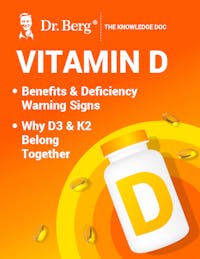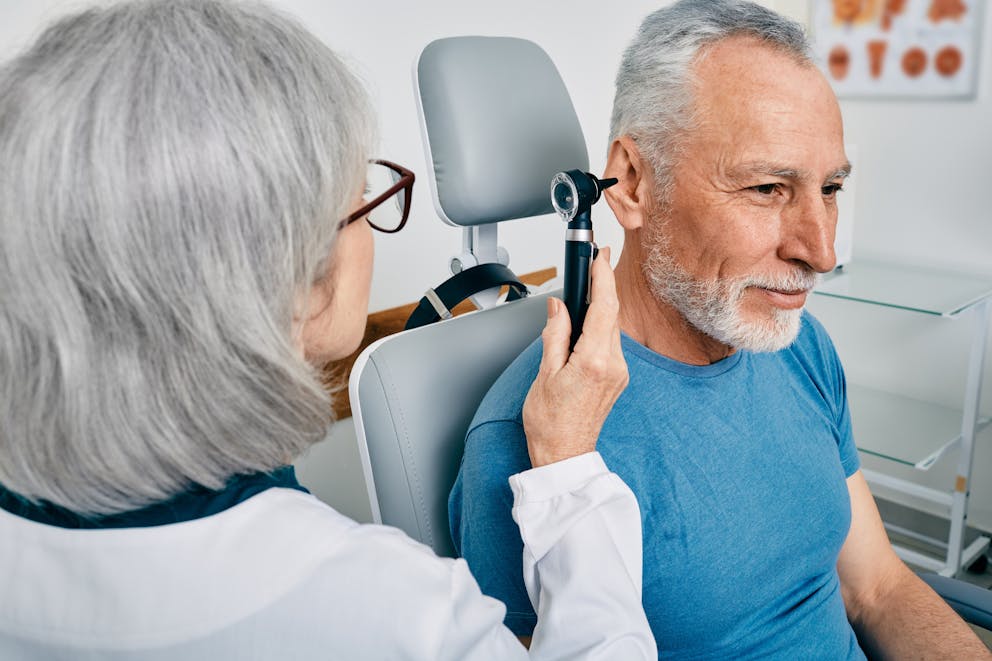The #1 Vitamin Deficiency Behind Vertigo

Vitamin D – Benefits and Deficiency Warning Signs
Learn to recognize early signs of vitamin D deficiency
Discover how to maintain healthy vitamin D levels
Explore common factors that can contribute to vitamin D deficiency
Understand why vitamin D3 and K2 should always be taken together
Get practical advice on how to maximize the health benefits of vitamin D

Vitamin D – Benefits and Deficiency Warning Signs
Learn to recognize early signs of vitamin D deficiency
Discover how to maintain healthy vitamin D levels
Explore common factors that can contribute to vitamin D deficiency
Understand why vitamin D3 and K2 should always be taken together
Get practical advice on how to maximize the health benefits of vitamin D

Vitamin D – Benefits and Deficiency Warning Signs
Learn to recognize early signs of vitamin D deficiency
Discover how to maintain healthy vitamin D levels
Explore common factors that can contribute to vitamin D deficiency
Understand why vitamin D3 and K2 should always be taken together
Get practical advice on how to maximize the health benefits of vitamin D

Vitamin D – Benefits and Deficiency Warning Signs
Learn to recognize early signs of vitamin D deficiency
Discover how to maintain healthy vitamin D levels
Explore common factors that can contribute to vitamin D deficiency
Understand why vitamin D3 and K2 should always be taken together
Get practical advice on how to maximize the health benefits of vitamin D

Vitamin D – Benefits and Deficiency Warning Signs
Learn to recognize early signs of vitamin D deficiency
Discover how to maintain healthy vitamin D levels
Explore common factors that can contribute to vitamin D deficiency
Understand why vitamin D3 and K2 should always be taken together
Get practical advice on how to maximize the health benefits of vitamin D

Healthy Keto Acceptable Foods List
Explore a comprehensive list of foods and beverages that align with Healthy Keto®
Identify which foods support fat-burning and metabolic health
Discover nutritious options for fats, proteins, and vegetables to support your health goals
Learn about common foods that aren’t Healthy Keto-approved

Healthy Keto Acceptable Foods List
Explore a comprehensive list of foods and beverages that align with Healthy Keto®
Identify which foods support fat-burning and metabolic health
Discover nutritious options for fats, proteins, and vegetables to support your health goals
Learn about common foods that aren’t Healthy Keto-approved

Healthy Keto Acceptable Foods List
Explore a comprehensive list of foods and beverages that align with Healthy Keto®
Identify which foods support fat-burning and metabolic health
Discover nutritious options for fats, proteins, and vegetables to support your health goals
Learn about common foods that aren’t Healthy Keto-approved

Healthy Keto Acceptable Foods List
Explore a comprehensive list of foods and beverages that align with Healthy Keto®
Identify which foods support fat-burning and metabolic health
Discover nutritious options for fats, proteins, and vegetables to support your health goals
Learn about common foods that aren’t Healthy Keto-approved

Healthy Keto Acceptable Foods List
Explore a comprehensive list of foods and beverages that align with Healthy Keto®
Identify which foods support fat-burning and metabolic health
Discover nutritious options for fats, proteins, and vegetables to support your health goals
Learn about common foods that aren’t Healthy Keto-approved
The #1 Vitamin Deficiency Behind Vertigo
Imagine feeling the world spin with every tilt of your head. That's what life is like for someone grappling with benign paroxysmal positional vertigo, commonly known as BPPV.
It turns out that a lack of vitamin D might be partly to blame. Recent studies have spotlighted how this deficiency can mess with inner ear health and potentially trigger dizzy spells.
I've seen firsthand the difference that proper diagnosis and treatment can make. Through specific maneuvers and nutritional tweaks, there's hope for stability in more ways than one.
You're about to dive into why upping your vitamin game could save you from taking an unexpected tumble—literally—and get insights on tackling BPPV head-on.
Understanding BPPV and Its Connection to Vitamin D Deficiency
Dizziness isn't just about feeling a bit off-kilter. For those with benign paroxysmal positional vertigo, or BPPV, it's like riding the teacups at Disney—except you never asked to get on.
This top cause of dizziness throws your balance out of whack when tiny calcium crystals in your ear decide they want a change of scenery.
What is Benign Paroxysmal Positional Vertigo?
BPPV can hit you like a wave when turning in bed or looking up. It happens as these microscopic stowaways travel into areas where they shouldn’t be, triggering intense but brief spells of vertigo.
The evidence shows that people battling this condition often lack vitamin D—the very thing their inner ears need for keeping calcium in bones and out of places it doesn't belong.

The Role of Vitamin D in Inner Ear Health
Vitamin D isn’t just good for sunny dispositions; it’s essential for healthy bones—including the ones inside your ears.
Without enough vitamin D, calcium plays hooky from its bone-building duties, leading to unwanted build-ups elsewhere—including those pesky ear crystals responsible for BPPV symptoms.
A systematic review and meta-analysis found folks with BPPV had significantly lower levels of this sunshine vitamin compared to non-vertigo sufferers—with some twice as likely to be deficient.
Diagnosing BPPV
Picture this: you're lying down, and suddenly, the room starts spinning as if you're on a merry-go-round. That's how some describe an episode of benign paroxysmal positional vertigo (BPPV), a leading cause of dizziness. A quick tilt or turn can trigger it.
The Dix-Hallpike test is your first stop on the road to pinpointing BPPV. During this exam, doctors watch for nystagmus—a fancy term for abnormal eye movements—and feelings of dizziness when they maneuver your head into various positions.
These signs wave the flag that BPPV might be in play. If positive, don't fret.
The Epley Maneuver may come to your rescue by nudging those pesky calcium crystals back where they belong in your inner ear—imagine guiding lost puppies home—reducing symptoms dramatically with simple head movements performed by a trained professional.
The Epley Maneuver: A Treatment for BPPV
Imagine a tiny crystal, no bigger than a grain of sand, causing a world of dizziness. That's precisely what happens in benign paroxysmal positional vertigo (BPPV). But fear not.
The Epley Maneuver is like the hero in this dizzy tale—a simple yet effective treatment that can often stop the spinning with just one try. This maneuver requires no fancy equipment; gravity guides those rogue crystals back home.
By carefully turning your head and body through specific movements, the misplaced calcium particles are moved out of the ear canal, where they can wreak havoc, letting you find your footing again.
It's so effective that many folks get immediate relief after their first session. But here’s something even more remarkable—this isn’t just guesswork.
Studies show people with BPPV have seen great results from this technique, making it a go-to strategy for doctors and physical therapists alike when battling bouts of vertigo caused by those pesky inner-ear stowaways.
The Link Between Vitamin D Deficiency and Increased Risk of BPPV
Imagine you're a pinball, zigzagging wildly every time you tilt your head—that's the dizzying reality for those with benign paroxysmal positional vertigo (BPPV).
And if that's not enough to make your world spin, consider this: lacking vitamin D could be inviting this unwelcome whirl. Studies show people low in vitamin D are 5.5 times more prone to experience BPPV than their sun-soaked counterparts.
But wait, it gets more staggering—those severely deficient in vitamin D might find themselves on an even rougher ride, being 23 times likelier to develop BPPV.
Why? Vitamin D isn't just about bone health; it plays a crucial role in inner ear function, where calcium needs precise management.
If there ever was a reason to bask in some sunshine or pop a supplement during darker days, keeping these spinning episodes at bay is one.
Recent research underscores the importance of maintaining adequate levels of this essential nutrient—not only for strong bones but also for steady balance.
Genetic Factors and Vitamin D Receptors in BPPV
Genetics might be to blame if you're spinning without a dance floor. While your vitamin D levels could look fine on paper, the real troublemaker may lurk in your genes. It turns out that specific genetic quirks can throw off the way your body handles vitamin D.
We're talking about those tiny but mighty structures called vitamin D receptors (VDRs). They’re crucial for using this sunshine nutrient properly. But when these VDRs are faulty due to genetic variations, it’s like having a lock with no key—the process gets jammed up.
This snafu can contribute to benign paroxysmal positional vertigo (BPPV), even if blood tests show normal vitamin D levels.
This revelation has researchers buzzing because it means we've got more than diet and sunlight, affecting our risk of getting dizzy spells from BPPV.
So, while popping supplements might seem like an easy fix, much more is happening behind the scenes in our DNA dance party.

Vitamin Supplementation as a Preventative Strategy for BPPV
Spinning rooms aren't just for dance clubs; those with Benign Paroxysmal Positional Vertigo (BPPV) know the dizziness all too well. The good news is that pumping up your vitamin D game could keep that unwanted merry-go-round at bay.
Studies suggest teaming vitamin D with K2 might be the dynamic duo you need to fend off those dizzy spells.
The Importance of Vitamin K2 in Calcium Transportation
We're not talking about packing suitcases, but rather how vitamin K2 is like your body's traffic cop directing calcium where it needs to go—and more importantly—where it doesn't.
Without enough K2, calcium can loiter in soft tissues instead of fortifying bones and teeth where they belong.
This is crucial because when we load up on vitamin D without its partner-in-crime, K2, we might calculate places other than our skeleton—like our inner ear—which isn’t exactly music to our ears if preventing vertigo is the goal.
Recommended Dosage for Vitamin D3 and K2 Supplementation
Finding the sweet spot of how much sunshine supplement one should pop can feel like guesswork.
But don't worry, there's no need to play Goldilocks here since guidelines suggest specific dosages tailored towards keeping BPPV at arm’s length while also catering to overall health maintenance.
Conclusion
Spin no more. That's the relief vitamin D deficiency and BPPV treatment can bring.
Catch those signals early. Remember, BPPV is a top cause of dizziness and often walks hand in hand with low vitamin D levels.
Trust the tests. The Dix-Hallpike test isn't just medical jargon; it's your ticket to pinpointing vertigo triggers.
Rely on maneuvers. Thanks to techniques like the Epley maneuver, they're not magic but feel like it when calcium crystals find their way home.
Embrace supplements wisely. Vitamin D3 and K2 aren't just alphabet soup—they're part of your defense against recurring BPPV bouts.
Bolster your bones and balance—make these nutrients non-negotiables for steady steps ahead.

Popular
08/21/2024
55.7K views
02/23/2025
46.8K views
11/18/2024
281.1K views
03/18/2024
11/21/2022




